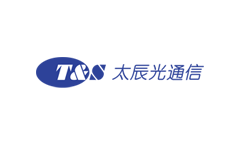The General Structure and Common Performance Analysis of Fiber Optic Connectors

Ⅰ. The general structure of Fiber Optic Connectors
The
main purpose of the optical fiber connector is to realize the
connection of the optical fiber. Now it has been widely used in optical
fiber connectors in optical fiber communication systems, with many types
and different structures. However, the basic structure of various types
of fiber optic connectors is the same. That is, most optical
fiber connectors use high-precision components (composed of three parts:
two pins and a coupling tube) to realize the alignment and connection
of optical fibers.
In this method, the optical fiber is inserted and fixed in the pin, and the surface of the pin is polished to achieve alignment in the coupling tube.
The outer components of the pins are made of metal or non-metal materials. The butt end of the pin must be polished, and the other end usually uses a bend-limiting member to support the optical fiber or optical fiber cable to relieve stress.
The coupling tube is generally made of a two-half composite, fastened cylindrical member made of ceramic or bronze and other materials, and is often equipped with a metal or plastic flange to facilitate the installation and fixation of the optical fiber connector. In order to align the optical fiber as accurately as possible, the processing of the pin and the coupling tube requires high precision. And the fiber optic accessories suppliers are supposed to control the quality strictly.
Ⅱ. The common performance of fiber optic connectors
The performance of the optical fiber connector: firstly, the optical performance, in addition, the interchangeability, repeatability, tensile strength, temperature, and plug-in times of the optical fiber connector must also be considered.
1. Optical performance: The requirements for the optical performance of fiber optic connectors are mainly the two most basic parameters of insertion loss and return loss.
Insertion loss, or connection loss, refers to the loss of effective optical power of the link caused by the introduction of optical fiber connectors. The smaller the insertion loss, the better, and the general requirement should be no more than 0.5dB.
Return loss refers to the ability of optical fiber connectors to suppress the reflection of link optical power, and its typical value should not be less than 25dB. In the actual connector, the pin surface has been specially polished, which can make the return loss greater, generally not less than 45dB.
2. Interchangeability and repeatability
Optical fiber connectors are universal passive components. For the same type of optical fiber connector, generally can be used in any combination, and can be used repeatedly, the additional loss introduced by this is generally in the range of less than 0.2dB.
3. Tensile strength
For a finished fiber optic connector, it is generally required that its tensile strength should not be less than 90N.
4. Temperature
It is generally required that the optical fiber connector must be able to be used normally at a temperature of -40℃ to +70℃.
- +1 Like
- Add to Favorites
Recommend
- Analysis of Key Technologies of Fiber Optic Connectors
- The Role of Gigabit Ethernet Transformers in Fiber Optic Connectors
- Introduction to Fiber Optic Connectors
- Classification and Typical Application of Fiber Optic Connectors
- Fiber Optic Connectors Glass vs. Copper
- OpDAT MV Highly Flexible Distributor Housing from METZ CONNECT is Designed for Fiber Optic and Copper Applications
- Knowledge about Fiber Optic Enclosures
- What Are the Components of Internet of Things?
This document is provided by Sekorm Platform for VIP exclusive service. The copyright is owned by Sekorm. Without authorization, any medias, websites or individual are not allowed to reprint. When authorizing the reprint, the link of www.sekorm.com must be indicated.





























































































































































































































































































































































































































































































































































































































































































































































































































































































